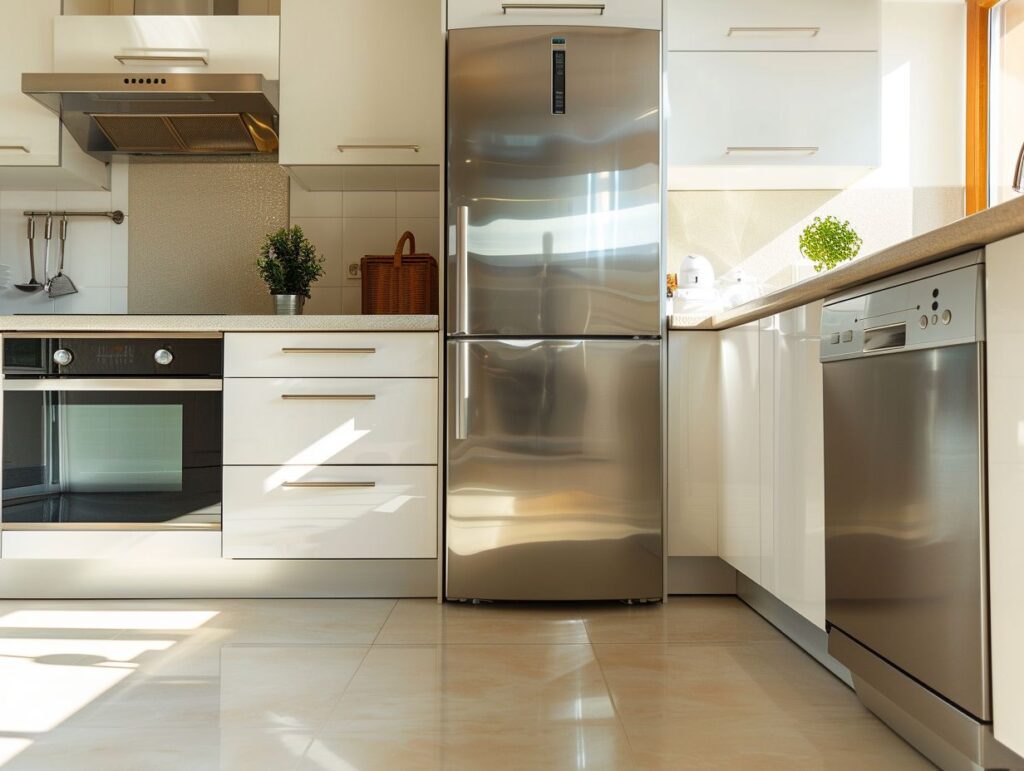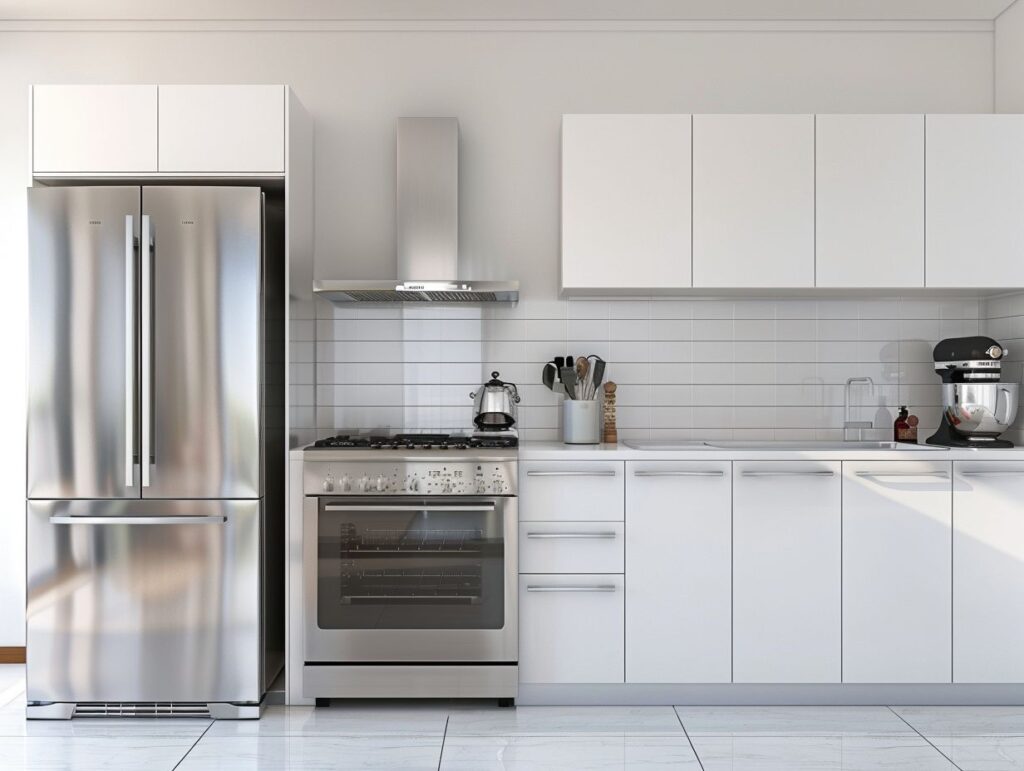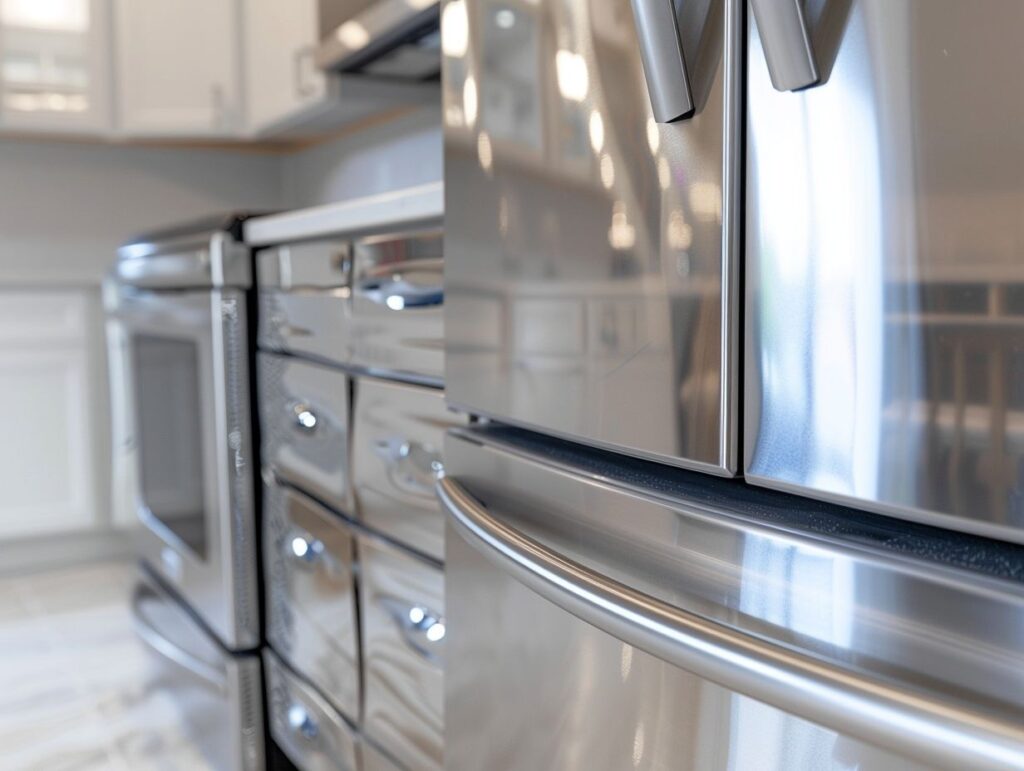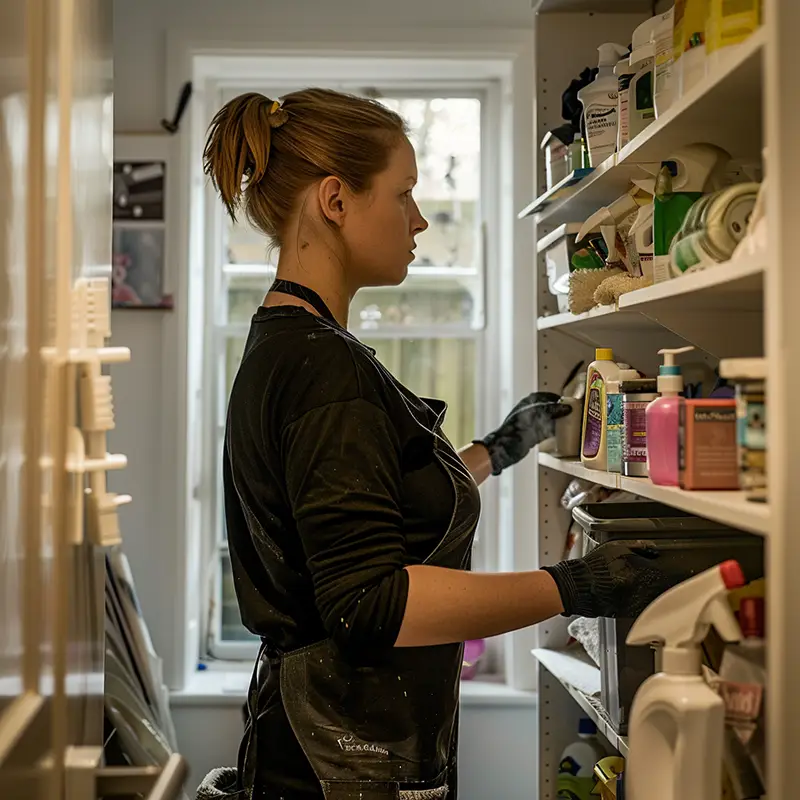If you love your garden and want it to look prim, keeping your gardening tools clean and well-maintained is essential for any gardener who wants to ensure their equipment lasts and performs at its best.
This article explores the importance of regular maintenance, highlighting its various benefits to gardening endeavours. From basic cleaning techniques to preventing rust, we cover effective methods for removing dirt and debris, sanitising tools, and storing them properly. Plus, discover DIY solutions that can make maintenance easier and more cost-effective. Whether you’re a seasoned gardener or just starting, this guide will help you keep your tools in shape for years.
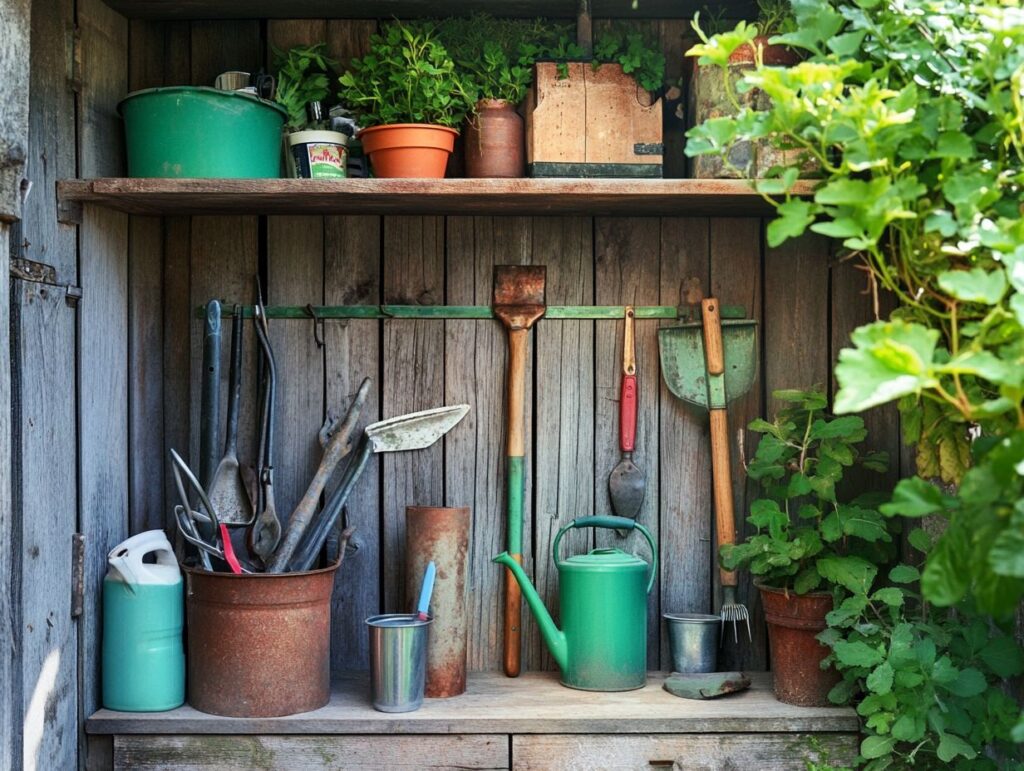
Importance of Cleaning and Maintaining Gardening Tools
Cleaning and maintaining your gardening tools is essential if you want them to last and work effectively, especially if you’re passionate about horticulture. Regular upkeep enhances how well your tools function and boosts your garden’s productivity, helping you achieve better results in your gardening efforts.
Leaving tools like trowels, secateurs, and spades idle for too long can collect dirt and corrosion, leading to decreased performance and even some safety concerns. By making maintenance a part of your gardening routine, you can create a safer and more efficient environment that supports healthy soil and plant growth.
Benefits of Regular Maintenance
Regularly maintaining your gardening tools isn’t just a chore; it extends their lifespan and boosts their efficiency, making your gardening tasks smoother and safer. When you take the time to clean and care for your tools, you ensure they last longer and work better so you can get more done in your garden.
Moreover, well-maintained tools help keep you safe by reducing the risk of accidents with worn or damaged equipment. Committing to upkeep can elevate your gardening experience.
For example, regularly sharpening your secateurs achieves cleaner cuts that promote healthier plant growth and make things easier on your hands while you work. Organising your tools in a dedicated storage area keeps them safe from rust and corrosion, especially for metal tools like spades and trowels, boosting their durability.
Safety also receives a significant upgrade when you keep your tools in good shape; dull edges and broken handles are just accidents waiting to happen. By prioritising these care practices, you create a more productive environment, ultimately leading to a thriving garden. Well-cared-for tools are key players in your gardening success.
Basic Cleaning Techniques for Gardening Tools
Mastering some basic cleaning techniques for your gardening tools is key to keeping them functional and looking smart. Knowing the proper cleaning methods can help keep your tools rust-free and always ready to use, whether dealing with stainless steel, plastic tools, or wooden handles.
Tools like seeders, secateurs, and rakes have their cleaning quirks, but the aim is the same: you want them in top condition for all your gardening adventures. Regular cleaning prevents rust from forming and protects your garden’s health by keeping those pesky pathogens at bay.
Removing Dirt and Debris
Removing dirt and debris from your gardening tools is essential to keep them performing well and in good condition.
Cleaning them regularly helps these essential tools last longer and creates a healthier gardening environment. Grab a scrubbing brush and mix some water with mild soap or vinegar; that combination works wonders to cut through grease and organic grime. A filler knife or wire brush can be your best friend for those stubborn stains, especially on metal surfaces.
Try to establish a regular cleaning schedule, ideally after each use. This not only keeps your tools clean but also helps prevent contamination in your soil. Additionally, your next gardening session will be much more enjoyable and efficient when everything is organised and ready to go.
Disinfecting and Sanitising
Disinfecting and sanitising your gardening tools is vital for keeping your garden healthy. The right sanitising solutions can eliminate harmful pathogens lingering on your pruners and trowels, making your gardening experience safer.
Remember to wear protective gloves while you’re sanitising—your hands will thank you for keeping them safe from harsh chemicals and dirt. Regularly disinfecting protects your plants and helps maintain overall garden hygiene, giving you peace of mind while you dig in.
You can try different methods to get the best results, like soaking your tools in a bleach solution or using commercial disinfectants made specifically for gardening equipment. Each method works better for certain materials and tool types, so it’s a good idea to do some research to find the best options for your collection. Sticking to a regular cleaning schedule will help keep the risk of disease transmission between plants at bay.
Remember, wearing masks, goggles, and gloves adds extra protection, ensuring the cleaning process remains effective and safe. By prioritising these practices, you’ll create a thriving garden space free from harmful contaminants.
Preventing Rust on Gardening Tools
Preventing rust on your gardening tools is key to ensuring they last and work effectively, especially when exposed to moisture.
Using rust prevention techniques—such as applying a protective coating or storing your tools in a dry place—can significantly reduce the risk of corrosion.
Remember, metal tools are particularly prone to rusting, so taking proactive measures can save you from costly replacements and help keep your tools in excellent condition for years.
Causes of Rust and How to Avoid Them
Understanding what causes rust on your gardening tools is key to keeping them in tip-top condition. Moisture is the main culprit here; it can lead to corrosion and damage to the metal, especially if you’re not storing your tools correctly. By managing moisture levels and using rust-free storage techniques, you can make your tools last longer and stay ready for use. Being aware of how environmental factors contribute to rust can save you time and money in the long run.
Common sources of moisture include humidity, rain, and even condensation, particularly in garages or sheds that lack proper ventilation. To tackle these issues, consider getting a dehumidifier for enclosed spaces or simply storing your tools in a dry, climate-controlled area.
Cleaning your tools after each use and applying a light coat of oil can create a protective barrier against moisture. Additionally, using effective storage solutions like hanging your tools or opting for breathable covers can enhance airflow, further reducing the risk of rust forming and keeping your gardening tools functional for years.
Removing Rust from Gardening Tools
Removing rust from your gardening tools is key to returning them to life and keeping them looking sharp. Using effective rust removers and treatments, you can rescue those tools that have fallen victim to corrosion and ensure they’re ready for action in your gardening tasks.
If tools like shears and spades sit too long, they can easily gather rust, which can interfere with their performance. Tackling those rust issues sooner rather than later is essential. A bit of effort can dramatically extend the life of your favourite gardening tools.
Effective Rust Removal Methods
Several effective rust removal methods bring your gardening tools back to life. You might be surprised to find that everyday household items like vinegar and bicarbonate of soda work wonders for breaking down rust. They’re eco-friendly options that make tool maintenance a doddle. Plus, polishing your tools after removing rust can boost their corrosion resistance, so your trusty trowels and garden forks stay in top condition for all your gardening adventures.
Try immersing those rusty tools in vinegar for a few hours to kick things off. Vinegar is incredibly effective at dissolving rust buildup—submerge them completely or dab the vinegar on with a cloth for those tricky spots. If the rust is a bit stubborn, mix up a paste with bicarbonate of soda and a splash of water. This gentle abrasive solution can work wonders; just spread it on the rust spots and gently scrub with steel wool or a soft brush until that rust lifts away.
After you’ve rinsed and dried everything thoroughly, don’t forget about polishing. A good-quality metal polish restores the shine and forms a protective layer. This keeps future rust at bay, ensuring your tools are ready to tackle gardening tasks for many seasons.
Storing Gardening Tools Properly
Proper storage of your gardening tools is key to keeping them in top condition and extending their lifespan. Organising your tools well and storing them in a weatherproof location, like a garden shed, can avoid rust and damage from the elements.
Hanging tools on a pegboard or using storage boxes enhance your organisation skills. This way, you’ll easily access the right tools while keeping them safe from moisture and contaminants.
Tips for Long-Term Storage
A few key strategies can make a difference when storing your gardening tools for the long term. Applying a protective coating to your metal tools will help prevent rust and corrosion while taking a break. It is also essential to ensure your storage area is dry and well-ventilated since moisture is a major culprit in rusting. These simple steps will enhance tool preservation and ensure they are ready for gardening season.
Another essential task is performing regular maintenance before putting away your tools. This means sharpening blades, tightening any loose screws, and cleaning off dirt and debris that can lead to wear and tear.
Consider using a silicone-based spray to add an extra layer of protection against moisture. Additionally, store your tools in a manner that keeps them from bumping into each other, which will help prevent scratches and dents. Keep them off the ground with hooks or shelves to improve air circulation if possible.
These efforts extend the life of your tools and make returning to gardening much smoother and more efficient.
DIY Solutions for Cleaning and Maintenance
You can whip up some effective and environmentally friendly DIY solutions for cleaning and maintaining your gardening tools. Using everyday household items, you can create homemade cleaning solutions that clean and preserve your tools without harsh chemicals.
Think vinegar mixtures and bicarbonate of soda scrubs—these eco-friendly cleaners can be real lifesavers in your tool maintenance routine. This way, you’ll keep your gardening essentials in top condition while doing your bit for the planet.
Homemade Cleaning Solutions
Homemade cleaning solutions can completely change the game for keeping your gardening tools in top condition. They offer effective, eco-friendly alternatives to commercial products packed with chemicals. Simple ingredients like vinegar and bicarbonate of soda can be mixed to create powerful cleaning agents that tackle dirt and rust without harmful substances. By adding these homemade solutions to your tool care routine, you’re helping the planet and ensuring your tools are always ready for your next gardening adventure.
Make a vinegar-based solution by mixing equal parts of white vinegar and water in a spray bottle. This handy cleaner doesn’t just wipe away grime; it also helps reduce rust build-up when used regularly. For those stubborn rust spots, a soda and water bicarbonate paste can save the day. Apply it to the affected area, let it sit for a few minutes, and then scrub gently with a brush.
